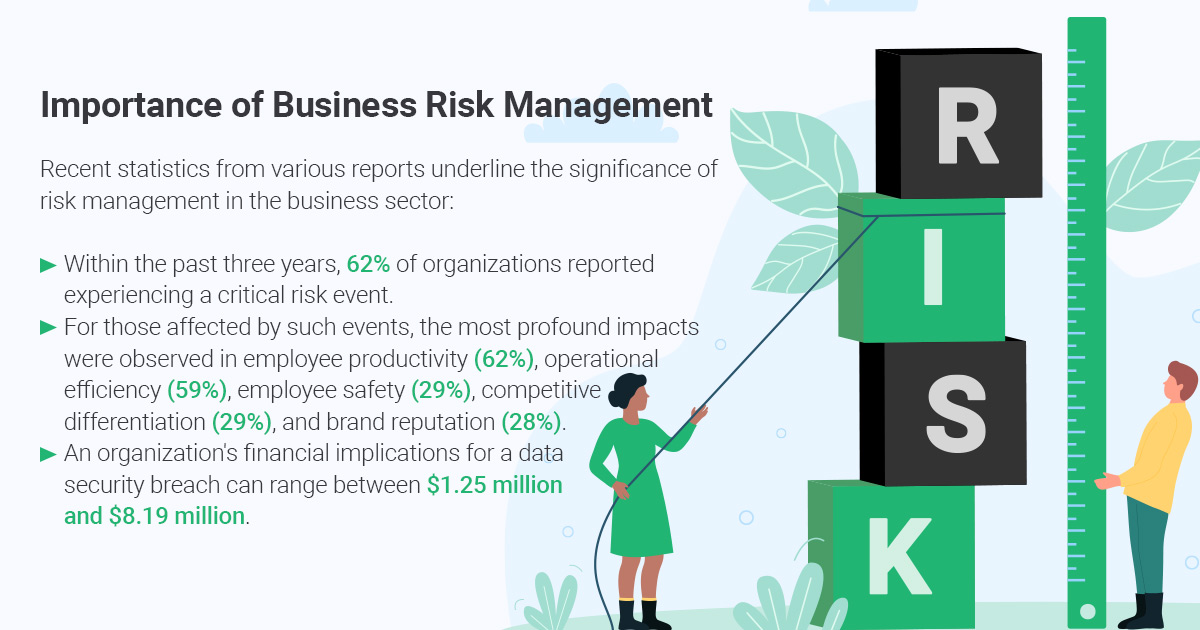Unlocking the Real Importance of Risk Management for Long-Term Growth
Wiki Article
Discovering the Importance of Risk Management for Effective Decision-Making Approaches
In the elaborate world of organization, Risk Management arises as a vital aspect in the decision-making process. The ability to determine potential hazards and opportunities, and plan accordingly, can spell the distinction between success and failure.Understanding the Principle of Risk Management
Risk Management, a vital component in decision-making, is usually misconstrued or oversimplified. Risk Management includes disciplined and organized methods, utilizing information and insightful analyses. From economic uncertainties, legal liabilities, tactical Management errors, to crashes and all-natural calamities, it addresses different threats - importance of risk management.The Function of Risk Management in Decision-Making Processes
In the realm of critical preparation and business operations, Risk Management plays an integral duty in decision-making procedures. Risk Management thus becomes a crucial device in decision-making, aiding leaders to make enlightened options based on a detailed understanding of the dangers involved. Risk Management serves as an important element in the decision-making processes of any kind of company.
Just How Risk Management Improves Strategic Planning
In the context of strategic preparation, Risk Management plays a critical duty. Launching with the recognition of prospective dangers, it even more reaches the execution of Risk mitigation measures. The duty of Risk Management is not static however dynamic, as it requires continuous monitoring and adjusting of techniques.Recognizing Prospective Dangers

Applying Risk Reduction
Risk mitigation approaches can vary from Risk evasion, Risk transfer, to take the chance of decrease. Each approach must be tailored to the certain Risk, considering its possible influence and the organization's Risk resistance. Effective Risk mitigation calls for a deep understanding of the Risk landscape and the possible effect of each Risk.Monitoring and Readjusting Approaches
Though Risk mitigation is an essential action in calculated planning, continual tracking and modification of these techniques is similarly important. This recurring process enables companies to determine brand-new threats and reassess existing ones, making certain the carried out techniques continue to be efficient in look these up the ever-changing organization setting. It also supplies an opportunity to review the success of the Risk Management steps, allowing modifications to be made where needed, further improving critical preparation. Effective surveillance and change call for the usage of analytics and vital performance signs (KPIs) to measure efficiency. These devices offer beneficial data-driven insights that can inform strategic decision-making. Tracking and readjusting Risk Management strategies is an important element for boosting a company's strength and strategic planning.Instance Researches: Successful Risk Management and Decision-Making
Worldwide of organization and money, effective Risk Management and decision-making usually work as the pillars of thriving enterprises. One such entity is a multinational oil business that minimized economic loss by hedging against varying oil rates. In one more circumstances, a technology startup grew by determining and approving risky, high-reward approaches in an unpredictable market. A worldwide financial institution, confronted with regulative unpredictabilities, successfully navigated the situation with proactive Risk assessment and vibrant decision-making. These cases highlight this article the value of sharp Risk Management in decision-making processes. It is not the absence of Risk, yet the Management of it, that usually separates successful companies from not successful ones. These instances underscore the important role of Risk Management in calculated decision-making. importance of risk management.Devices and Techniques for Reliable Risk Management
Navigating the complex puzzle of Risk Management calls for the best collection of methods and devices. These devices, such as Risk signs up and heat maps, aid in identifying and examining prospective dangers. Techniques include both quantitative approaches, like level of sensitivity analysis, and qualitative methods, such as SWOT evaluation. These assistance in prioritizing dangers based on their prospective impact and probability. Risk reaction techniques, an essential part of Risk Management, entail approving, staying clear of, transferring, or mitigating dangers. Monitoring and regulating threats, through normal audits and reviews, ensure that the strategies continue to be reliable. With these methods and devices, decision-makers can navigate the facility landscape of Risk Management, therefore assisting in notified and effective decision-making.Future Fads in Risk Management and Decision-Making Strategies
As we discover the huge landscape of Risk Management, it comes to be Home Page evident that the devices and techniques used today will certainly continue to develop. The idea of Risk culture, where every participant of a company is mindful and entailed in Risk Management, will certainly get a lot more prominence. These patterns proclaim an even more positive and comprehensive strategy in the direction of Risk Management and decision-making.Verdict
:max_bytes(150000):strip_icc()/operational_risk.asp-Final-4be32b4ee5c74958b22dfddd7262966f.png)
Risk Management hence becomes an essential tool in decision-making, aiding leaders to make informed options based on an extensive understanding of the threats included. Risk reduction strategies can vary from Risk evasion, Risk transfer, to risk reduction (importance of risk management). Reliable Risk reduction requires a deep understanding of the Risk landscape and the possible impact of each Risk. Risk response techniques, a crucial component of Risk Management, involve approving, preventing, transferring, or mitigating threats. The concept of Risk society, where every participant of an organization is aware and involved in Risk Management, will gain extra prominence
Report this wiki page